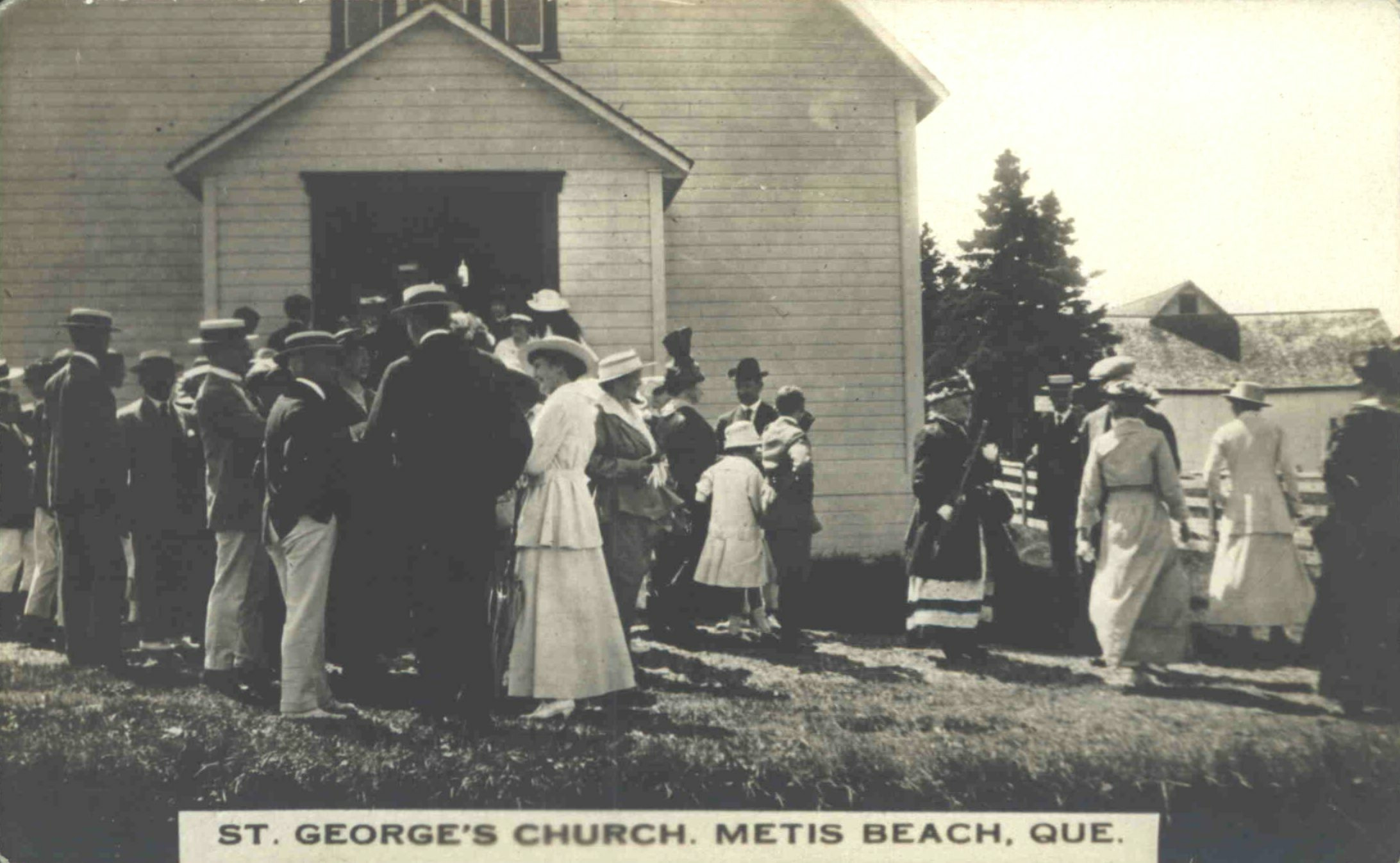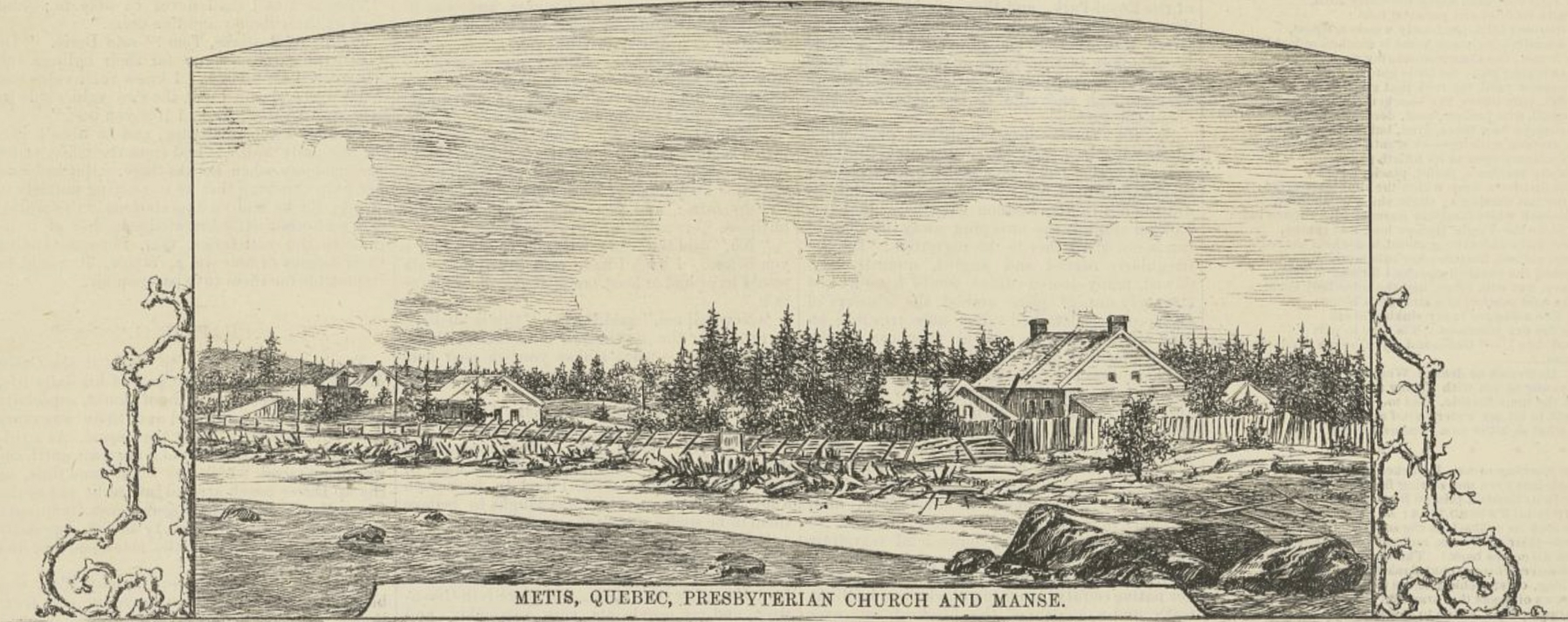Metis at Prayer – The Churches and Their History
Religion in rural regions is more than just about worship. It is also about community. Metis is blessed with five churches. Each of them has its own story.
In the early years Metis was missionary territory. Protestant and Roman Catholic clergymen were sent to Metis to provide the essential rites of baptism, burial and marriage. Evangelical societies raised funds to pay the stipends of clergymen to send them to the Metis mission because the community was too sparse and too poor to support one on its own. The Presbyterian churches were eager to convert Roman Catholics. The Roman Catholics were anxious to protect their flock.

Members of the congregation of St. George’s Anglican Church assembled in their summer finery every Sunday in July and August.
Churches were built when there were sufficient funds and residents to support them. Even the least wealthy parishioners contributed. But the divisions within Christianity were no different in Metis than elsewhere. A Presbyterian Church was built for year-round residents of Metis. Another was erected for summer residents in Little Metis. Not to be left out, the Methodists built their own chapel. So did the Anglicans. The Catholic Church chose to avoid Metis altogether, building their parish church as far distant from the Protestants as possible, high atop the hill in St. Octave. With the population growing however, another Roman Catholic church was built in Baie-des-Sables. That parish in turn divided in two and a new church was built to provide services in Les Boules.
Religious diversity is a gift for the historian, particularly because clergymen were often good with the pen and careful record-keepers. Their letters are a rich resource that help chronicle life in Metis. Even if the community was divided into various congregations, there was agreement that worship was the pillar of a healthy community. There was a pew for every parishioner.


